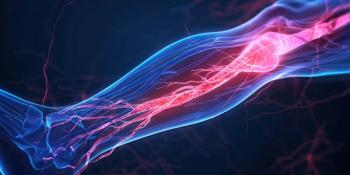
Coping with Food Allergies
This information can help food allergy patients find ways to cope.
This information can help food allergy patients find ways to cope.
What Is a Food Allergy?
A food allergy can negatively affect your health. It occurs when an individual is exposed to a particular food (see insert). The first time you eat the offending food, your immune system creates disease-fighting antibodies. When you eat the food again, your body treats it as a foreign invader and attempts to get rid of it. It does this by releasing a substance called histamine. Histamine is a powerful chemical, affecting the skin, the gastrointestinal tract, and the respiratory and cardiovascular systems.5 Symptoms may appear immediately or up to 2 hours later (Online Table 1). The severity of the reaction depends on your sensitivity to the food and how much you ate. An individual does not necessarily have to eat the food to have a reaction. Inhaling particles of the food or having the food contact the skin generally cause mild reactions.6
Table 1: Food Allergy Symptoms
- Hives
- Flushed skin or a rash
- Tingling or itchy sensation in the mouth
- Swelling of the face, tongue, or lips
- Vomiting and/or diarrhea
- Stomach cramps
- Coughing
- Wheezing
- Dizziness
- Swelling of the throat
- Difficulty breathing
- Loss of consciousness
Adapted from reference 4.
When a food allergy is severe, it may lead to a life-threatening allergic reaction called anaphylaxis. Symptoms include itching; swelling of the lips or tongue, difficulty swallowing, hoarseness, shortness of breath, coughing, wheezing, chest pain, a weak pulse, dizziness, vomiting, diarrhea, and cramps.7 People generally experience 2 or more symptoms. Ninety percent of deaths from food allergies are caused by allergic reactions to peanuts or tree nuts.1,8 While most allergic reactions occur within 2 hours of eating the food, anaphylaxis can occur within 4 to 8 hours.1 Call 911 if you or others experience severe symptoms, such as difficulty breathing. Death may occur within 30 minutes. Just because the initial symptoms may be mild, there is no way of knowing if the symptoms will progress to anaphylaxis.1 If in doubt, call 911. An attempt to “wait it out” can be a fatal mistake.
The number of individuals with food allergies has steadily increased in the past 20 years (an 18% increase). Approximately 6% of children have food allergies. One-third of children with food allergies also have asthma, which increases their risk for anaphylaxis.9,10
If you suspect that you or your child has a food allergy, see an allergy specialist, who can identify the food(s) causing an allergic reaction. Allergy specialists often administer a skin prick test. Needles with tiny amounts of food extract pierce the skin’s surface. Swelling or redness around one of the needle sites confirms that you are allergic to that particular food.
Can a Child Outgrow Allergies?
Many children outgrow allergies to milk, eggs, wheat, and soy by the time they reach adolescence. Allergies to peanuts, tree nuts, and shellfish tend to last a lifetime. When adults develop a food allergy, it tends to last for the rest of their lifetime.6,7
Treating Food Allergies
There is no cure for food allergies. Treatment focuses on managing symptoms and avoiding the food. For mild reactions, OTC antihistamines can help ease the discomfort. Your local pharmacist can help you select the right product and explain its use and side effects. For serious reactions, your doctor will prescribe agents that counter anaphylaxis. One example is a self-administered epinephrine injection (often called an EpiPen). Epinephrine immediately reverses anaphylaxis.5
Coping Strategies
Reading labels is critical. The law requires manufacturers to list all ingredients in a product. If the product contains a known food allergen, it must be listed on the label. Manufacturers must also list the unintentional presence of food allergens that may result from cross-contact during food processing. For example, if a machine processes peanut butter and is later used to process another food, the second food may contain trace amounts of peanut butter. In these cases, the label notes “may contain peanuts.” If a label is confusing, do not buy the product. Online Table 2 lists other coping strategies.
Table 2: Coping with Allergies
Be cautious when buying foods without labels, such as a cake from a pastry shop. Avoid all foods for which you are unsure of the ingredients.
Avoid foods that may have cross-contact with other foods.
Keep a food diary that tracks the foods you eat, your symptoms, and how long after eating the symptoms appear. This helps identify the food allergy.
Avoid high-risk food situations where accidental food ingestion can occur (eg, buffets).
Ask your doctor for a written emergency management plan. Share this plan with your child’s teachers. Inform others that your child is carrying an EpiPen.
Always wear a medical band noting food allergies. Carry the name and telephone number of an emergency contact.
If you are prescribed an injectable epinephrine pen, always carry it with you. If you are not sure how to use the pen, ask your doctor to demonstrate how it is used. Routinely check the expiration date on the pen. Carry 2 pens in case 1 malfunctions.
When eating out, inform your server of your food allergy. Do this even if you had the same meal in a different restaurant. Different chefs may use different ingredients.
After you use an EpiPen, dial 911 immediately.
Adapted from references 1, 11-13.
More Information
The FDA website (
Dr. Zanni is a psychologist and health-system consultant based in Alexandria, Virginia.
References:
- Food allergies: what you need to know. FDA website. www.fda.gov/food/ingredientspackaginglabeling/foodallergens/ucm079311.htm. Accessed February 24, 2014.
- Chung EH. Vaccine allergies. Clin Exp Vaccine Res. 2014;3:50-57.
- Sicherer S. Food allergies. Medscape website. http://emedicine.medscape.com/article/135959-overview. Accessed February 24, 2014.
- American Academy of Allergy, Asthma & Immunology. Food allergy: tips to remember. www.aaaai.org/conditions-and-treatments/library/at-a-glance/food-allergy.aspx. Accessed February 24, 2014.
- Food allergies. WebMD website. www.webmd.com/allergies/food-allergies. Accessed February 24, 2014.
- Food allergy. US National Library of Medicine. www.ncbi.nlm.nih.gov/pubmedhealth/PMH0001820. Accessed February 24, 2014.
- Food allergy. National Institute of Allergy and Infectious Diseases website. www.niaid.nih.gov/topics/foodAllergy/understanding/Pages/allergicRxn.aspx. Accessed February 24, 2014.
- McWilliams LM, Mousallem T, Burks AW. Future therapies for food allergy. Hum Vaccin Immunother. 2012;8:1479-1484.
- Voluntary guidelines for managing food allergies in schools and early care and education programs. Centers for Disease Control and Prevention website. www.cdc.gov/healthyyouth/foodallergies/pdf/13_243135_A_Food_Allergy_Web_508.pdf. Accessed March 5, 2014.
- What is an allergic reaction to food? National Institute of Allergy and Infectious Diseases website. www.niaid.nih.gov/topics/foodAllergy/understanding/Pages/allergicRxn.aspx. Accessed February 24, 2014.
- Berin MC, Mayer L. Can we produce true tolerance in patients with food allergy? J Allergy Clin Immunol. 2013;131:14-22.
- Coping with allergies. http://allaboutfoodallergies.com/coping-with-allergies. FoodDiet website. Accessed February 24, 2014.
- Emotional and social issues. Food Allergy Research & Education website. www.foodallergy.org/emotional-and-social-issues. Accessed February 27, 2014.
Newsletter
Stay informed on drug updates, treatment guidelines, and pharmacy practice trends—subscribe to Pharmacy Times for weekly clinical insights.












































































































































































































